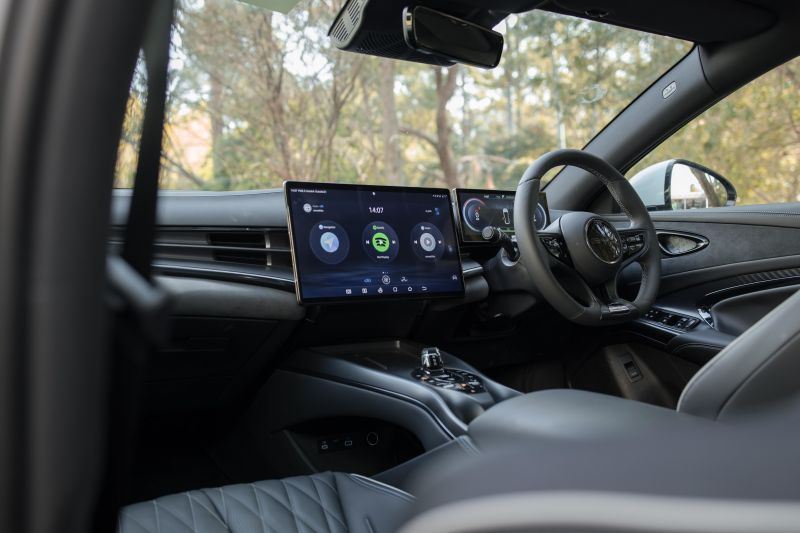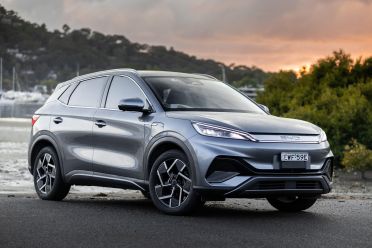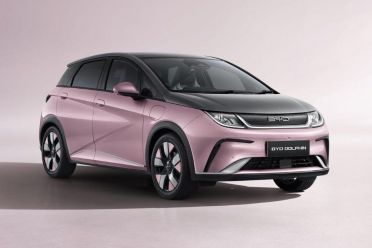BYD Australia is set to announce pricing for its upcoming Tesla Model 3-rivalling Seal sedan on October 17.
This announcement was shared on LinkedIn by Luke Todd, who is the managing director of BYD’s local distributor, EVDirect.
It’s expected the BYD Seal will be priced similarly to the Tesla Model 3, which recently received an update itself and is now priced from $61,900 before on-roads for the RWD, to $71,900 before on-roads for the dual-motor Long Range. It’s worth noting there’s no updated Model 3 Performance yet.
Although BYD hasn’t detailed the pricing and full specifications of the Australian-specification Seal models yet, the company has confirmed three variants for our market.
The entry-level Standard Dynamic Range has a single-motor rear-wheel drive powertrain with 150kW of power, and is claimed to be able to do the 0-100km/h sprint in 7.5 seconds. It has a claimed WLTP range of 460km.
The mid-spec Premium Extended Range ups the power to 230kW to the rear wheels with a 0-100km/h sprint time of 5.9 seconds. Claimed WLTP range is up to 570km.
The flagship Performance AWD variant gets 390kW of power from its 160kW front motor and 230kW rear motor, and is able to accelerate from 0-100km/h in 3.8 seconds. It has a claimed WLTP range of 520km.
The Seal stretches 4775mm long, and boasts 402L of boot space, as well as 53L under the bonnet.
It’s also quite slippery, boasting one of the industry’s lowest drag coefficients: just 0.219 Cd. For context, the Mercedes-Benz EQS has a drag coefficient of 0.20 Cd.
Don’t expect to see the polarising Build Your Dreams badging on the rear of the Seal as the company moves away from this motif.
The Seal is the first BYD model to adopt its all-new e-Platform 3.0 electric vehicle platform featuring Cell-to-Body (CTB) technology, which fully integrates BYD’s Blade battery into the entire vehicle structure for greater rigidity and safety.
It offers maximum DC charging power of 150kW, and BYD says the vehicle can be charged in 26 minutes.
Billed as a sports sedan, the Seal features double wishbone suspension up front and a multi-link set-up down back which works in concert with BYD’s chassis control system.
BYD’s in-house developed DiSus Intelligent Body Control System provides bespoke damper settings for each drive mode to better control lateral and vertical movement, along with matching suspension compliance levels.
In order to minimise or eliminate loss of traction under heavy loads the Seal also receives the latest Intelligence Torque Adaption Control (iTAC) technology, which is the company’s own version of torque vectoring.
All BYD Seal variants also get a suite of advanced driver assistance systems (ADAS) as standard, including autonomous emergency braking (forward and reverse), rear-cross traffic assist, lane-keep assist and emergency lane-keep assist.
Inside, there’s a rotating 15.6-inch multimedia touchscreen display, as well as a digital instrument cluster.
The infotainment system features an intelligent voice assistant, while the BYD App allows you to remotely control functions like the climate control.
An onboard 4G connection supports over-the-air updates, which can bring new features.
The BYD Seal will be the Chinese carmaker’s third model in Australia, following the Atto 3 SUV and the Dolphin hatchback that goes on sale this year.
BYD isn’t just stopping with a three-car line-up for the Australian market as it previously confirmed a mid-sized SUV is “on the product list for sale and delivery in 2024”.
An electrified ute has also been previously confirmed for an Australian launch during 2024.
MORE: Everything BYD Seal




